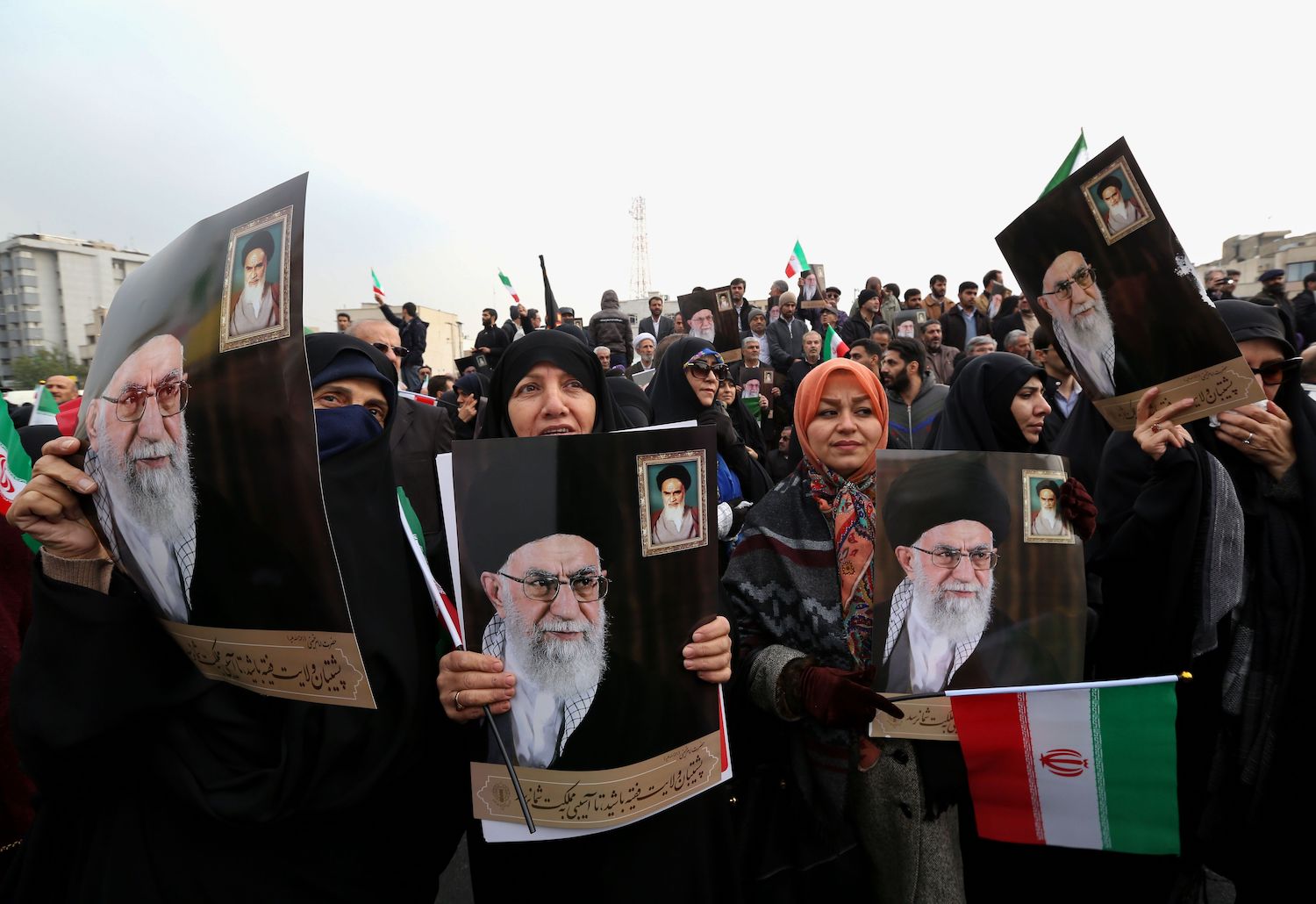
To Secure His Legacy, Khamenei Is Packing Iran’s Government With Young Radicals
The supreme leader’s youth-washing strategy could keep detente with the United States off the table for years.
In just under a year, Iran will elect a new president. Coming after the U.S. election this November, there is some hope that the occasion could usher in improved U.S.-Iranian relations. Yet, given the way Supreme Leader Ali Khamenei has been narrowing the field of candidates, that seems unlikely.
Khamenei set the scene for the upcoming vote with a manifesto published in February 2019 with the title “The Second Phase of the Revolution.” In it, he reflects on the 40 years since the 1979 Islamic Revolution and charts a vision for the next 40. Khamenei appears to understand that, at age 81, he will not remain leader forever, and so he seeks to ensure that his principles outlive him. The predominant strategy the manifesto puts forth is “javangarayi va javansazi modiriyat-e keshvar” or the “youthfulness and rejuvenation of the country’s management,” through which young supporters “prepare the ground for the formation of a young and pious government.”
In government, this so-called youth-washing project has taken the form of stocking unelected political offices with people who are either younger or more hard-line. Since 2019, Khamenei has replaced several military elites in the armed forces (Joint Staff), conventional military (Artesh), and the Islamic Revolutionary Guard Corps (IRGC) to inject new blood into the veins of the regime. His old representatives in the state bureaucracy, local governments, and universities have likewise been replaced by a young and even more radical generation.
For example, in March 2019, the ultraconservative hard-liner Ebrahim Raisi stepped in for Sadeq Larijani as chief justice of Iran. Raisi previously lost to President Hassan Rouhani in Iran’s 2017 presidential election and played a prominent role in the mass execution of thousands of leftist political prisoners as deputy prosecutor general of Tehran in 1988. After he became the head of Iran’s judiciary, the use of the death penalty in the country has escalated. Since late June, 11 Iranian citizens—three in Tehran and eight in Isfahan—have been sentenced to death for taking part in mass anti-government protests in November 2019. Meanwhile, the Iranian journalist Ruhollah Zam, who was accused of fueling anti-government protests through a popular Telegram channel in 2017, received a death sentence last month. He had fled to exile in France before being arrested by Iranian authorities in Iraq.
Iran’s parliament, the Majlis, an elected body, was also significantly influenced by Khamenei’s political project this year. In May, Gen. Mohammad Bagher Qalibaf, an IRGC technocrat, three-time loser in previous presidential elections, and close friend of Khamenei’s son and potential successor Mojtaba Khamenei, ascended to the position of speaker of parliament. He is known for a series of corruption cases and his ardent support of using live fire against student protesters. Meanwhile, the Guardian Council, a 12-person body appointed by the supreme leader, vets every candidate for national office. Since 2019, the council has favored only candidates who display total loyalty to the supreme leader and his so-called revolutionary politics. In the latest parliamentary election, 90 previous members of parliament were disqualified from running again.
The 2021 presidential election will be the final piece of the puzzle in Khamenei’s “Second Phase of the Revolution,” regardless of whether the Iranian people share his vision.
For his purposes, the candidates must have revolutionary loyalty he seeks, the management skills to run a regime under internal and external pressure, and, less importantly, some degree of popularity among the people. Such candidates would be in the political vein of popular hard-liner and ex-president Mahmoud Ahmadinejad, yet even more loyal to Khamenei.
On its own, the political landscape engineered by Khamenei already severely restricts the spectrum of ideology presidential candidates may hold. Left-leaning groups including the Reformists (such as former President Mohammad Khatami) and centrist pragmatists (such as current President Rouhani) no longer have a place in an election that seeks the formation of a secure, young, “revolutionary” administration.
Although such figures previously marked a divide between the state’s elected bodies and its unelected bodies, Khamenei is now laser-focused on ensuring the consolidation of hard-liner power and a smooth succession upon his death; he will no longer need or tolerate any duality that creates a potential impasse for the regime. Reformists and centrists are now liabilities when internal dissent is more dangerous than ever.
The regime does not admit to insecurity, of course, but nonetheless there is considerable fear that any misstep could sabotage a system already in distress. Meanwhile, Khamenei’s job in purging his undesirables from the competition is easier than before, since reformists and pragmatists have lost much of their credibility among Iranians due to immense mismanagement, incompetency, and corruption in recent administration. From the 2017-2018 protests on, the slogan “Reformists, hard-liners, it is over for all of you!” has become increasingly popular.
Source: Foreignpolicy.com

